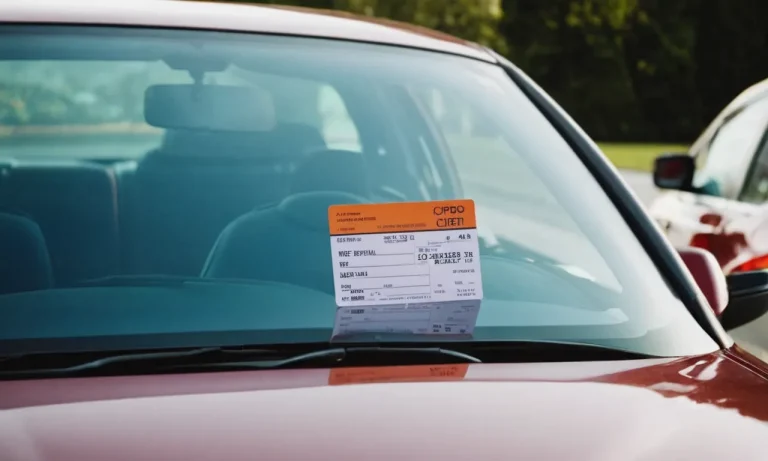With the rapid development of aviation technology, commercial airliners are becoming faster than ever before. If you’re short on time, here’s a quick answer to your question: the Boeing 747 is currently the fastest commercial jet airliner in service with a top speed of Mach 0.92.
In this comprehensive article, we will dive deep into the details surrounding the fastest commercial planes in operation today.
We will look at the top speed capabilities of various models, the technology and design features that allow them to achieve such high velocities, key considerations like fuel efficiency and range, as well as the airlines that operate these speedy jets.
Key Factors That Enable High Speed Flight
When it comes to commercial aviation, speed is a crucial factor.
Passengers want to reach their destination as quickly as possible, and airlines strive to provide efficient and time-saving travel options.
In the world of aviation, there are several key factors that enable high-speed flight.
Aerodynamic design
One of the most important factors in achieving high speed in commercial planes is the aerodynamic design.
The shape of the aircraft plays a significant role in reducing drag and increasing efficiency.
Modern aircraft are designed with sleek, streamlined fuselages and wings to minimize air resistance.
The use of advanced computer simulations and wind tunnel testing allows engineers to optimize the design for maximum speed.
By reducing drag, planes can achieve higher speeds while consuming less fuel.
Engine power and thrust
Another crucial factor for high-speed flight is the power and thrust generated by the engines.
Commercial planes are equipped with powerful jet engines that produce an enormous amount of thrust. These engines are designed to propel the aircraft forward at high speeds.
Modern engines utilize advanced technologies, such as turbofan and high-bypass ratio designs, to achieve maximum efficiency and thrust.
The combination of engine power and efficient fuel consumption allows planes to reach incredible speeds.
Lightweight materials
The use of lightweight materials is also a key factor in enabling high-speed flight. Lighter aircraft require less power to achieve and maintain high speeds.
Advances in materials science have allowed for the development of strong and lightweight materials, such as carbon fiber composites and titanium alloys.
These materials are used in the construction of modern aircraft, reducing their weight and improving their overall performance.
Lighter planes can accelerate faster and maintain higher speeds, making them more efficient and capable of reaching faster speeds.
The Fastest Commercial Planes in Operation Today
Boeing 747
The Boeing 747, also known as the “Queen of the Skies,” is one of the fastest commercial planes in operation today.
With a top speed of approximately 988 kilometers per hour (614 mph), it can transport passengers across long distances in a relatively short amount of time.
The 747 is the latest variant of the iconic Boeing 747 series, offering enhanced fuel efficiency and advanced aerodynamics.
It is equipped with four powerful engines, allowing it to reach its impressive speed while carrying a large number of passengers and cargo.
Boeing 787 Dreamliner
Another fast commercial plane is the Boeing 787 Dreamliner. With a top speed of about 954 kilometers per hour (593 mph), it is designed for long-haul flights with improved fuel efficiency and passenger comfort.
The Dreamliner’s advanced composite materials and aerodynamic design contribute to its speed and efficiency.
It also incorporates advanced technologies, such as quieter engines and larger windows, to enhance the overall flying experience for passengers.
Airbus A350
The Airbus A350 is another notable fast commercial plane. With a top speed of around 945 kilometers per hour (587 mph), it is one of the most advanced aircraft in the world.
The A350 features a lightweight composite structure and aerodynamic improvements, allowing it to achieve both speed and fuel efficiency.
It is equipped with state-of-the-art engines and advanced avionics systems, making it a popular choice for long-haul flights.
Concorde (retired)
While no longer in operation, the Concorde was once the epitome of speed in commercial aviation. It held the title of the fastest commercial plane for over 27 years.
With a top speed of approximately 2,180 kilometers per hour (1,354 mph), the Concorde could travel at supersonic speeds, reducing travel times significantly.
However, due to various factors, including high operating costs and noise restrictions, the Concorde was retired in 2003. Nonetheless, its legacy as a technological marvel remains.

Speed vs. Fuel Efficiency and Range
When it comes to commercial aviation, speed is often seen as a top priority. Passengers want to reach their destinations as quickly as possible.
However, airlines also need to consider fuel efficiency and range when choosing an aircraft.
Balancing these factors is crucial for airlines to maximize profitability and provide a positive customer experience.
Fuel efficiency gains with high bypass engines
One way aircraft manufacturers have been able to improve fuel efficiency is through the use of high bypass engines.
These engines have a larger fan at the front, which allows a greater amount of air to bypass the combustion process.
This not only reduces fuel consumption but also lowers emissions.
This not only saves airlines money on fuel costs but also contributes to a greener environment.
Range capabilities of new generation aircraft
Advancements in technology have also led to significant improvements in the range capabilities of new generation aircraft.
Long-haul flights that once required multiple stops can now be completed non-stop, thanks to the increased fuel efficiency and aerodynamics of modern planes.
For instance, the Airbus A350 XWB has a range of up to 8,000 nautical miles, allowing airlines to connect distant cities without the need for layovers.
This not only enhances passenger convenience but also opens up new market opportunities for airlines.
Comparison to the supersonic Concorde
While speed is undoubtedly a critical factor, it is worth noting the trade-offs that come with supersonic flight.
The Concorde, the famous supersonic jet that operated from 1976 to 2003, could reach speeds of up to Mach 2.04, or over 1,300 mph.
However, its fuel consumption was significantly higher compared to subsonic aircraft, making it less fuel-efficient.
Additionally, the limited range of the Concorde meant that it was only suitable for transatlantic flights.
The high operating costs and limited market demand eventually led to its retirement.
Today, commercial aviation focuses on achieving a balance between speed, fuel efficiency, and range.
Manufacturers are constantly pushing the boundaries of technology to develop aircraft that can travel faster, farther, and more efficiently.
This not only benefits airlines but also passengers and the environment as a whole.
Airlines Operating the Fastest Planes
Lufthansa
Lufthansa, the German airline, is known for operating some of the fastest planes in the world.
Their fleet includes the Boeing 747-8, which has a top speed of approximately 614 miles per hour (988 kilometers per hour).
This aircraft, also known as the “Queen of the Skies,” is not only fast but also offers a luxurious and comfortable flying experience for passengers.
Lufthansa’s commitment to speed and quality makes it a top choice for travelers who value efficiency and comfort.
Korean Air
Korean Air is another airline that takes pride in operating some of the fastest planes in the industry.
One of their notable aircraft is the Boeing 777-300ER, which can reach speeds of up to 590 miles per hour (950 kilometers per hour).
This high-speed aircraft allows Korean Air to offer efficient and swift journeys to their passengers.
With a focus on customer satisfaction and top-notch service, Korean Air has earned a reputation for being one of the leading airlines in the world.
Cathay Pacific
Cathay Pacific, based in Hong Kong, is renowned for its fast and efficient operations.
Their fleet includes the Airbus A350-1000, which boasts a maximum speed of around 590 miles per hour (950 kilometers per hour).
This state-of-the-art aircraft not only offers speed but also features advanced technology and luxurious amenities, ensuring a pleasant travel experience for passengers.
Cathay Pacific’s commitment to innovation and customer satisfaction has earned them numerous accolades in the aviation industry.
ANA
All Nippon Airways (ANA), the largest airline in Japan, is known for its modern and high-speed fleet.
One of their fastest planes is the Boeing 787-9, which can reach speeds of up to 593 miles per hour (954 kilometers per hour).
ANA’s dedication to safety, reliability, and customer service has made them a popular choice among travelers.
With a focus on innovation and continuous improvement, ANA continues to push the boundaries of speed and efficiency in commercial aviation.
Conclusion
While the Concorde could fly faster than any commercial plane today, newer generation aircraft like the 747-8i and 787 Dreamliner offer the best balance of speed, fuel efficiency and range.
Aerodynamic refinements, lightweight materials and powerful yet efficient engines allow these planes to cruise at up to Mach 0.89 while carrying far more passengers much farther than the Concorde ever could.
Yet there remains lots of room for continued innovation, and concepts for future supersonic transports hold the promise of faster commercial flight in the decades ahead.






